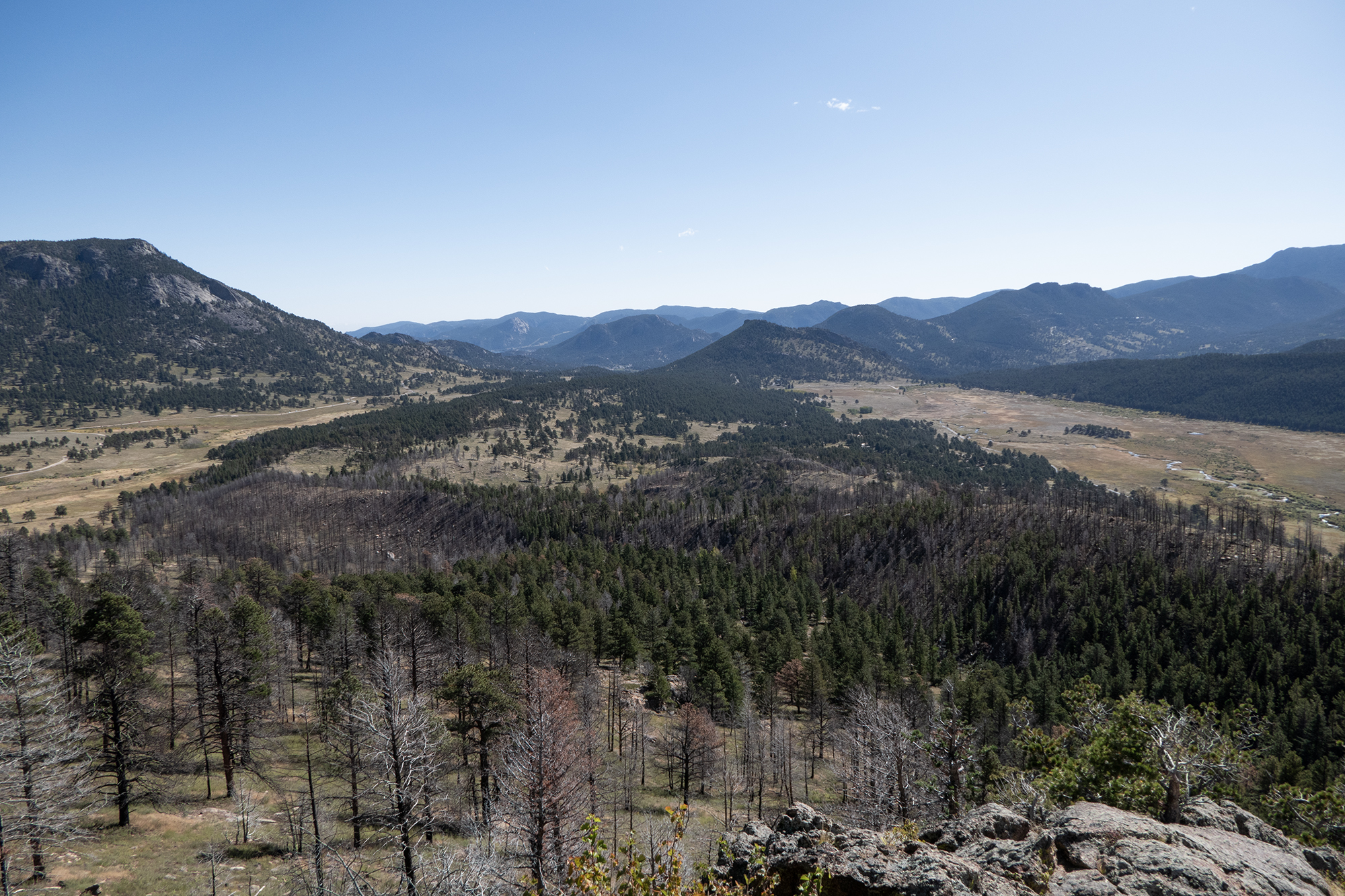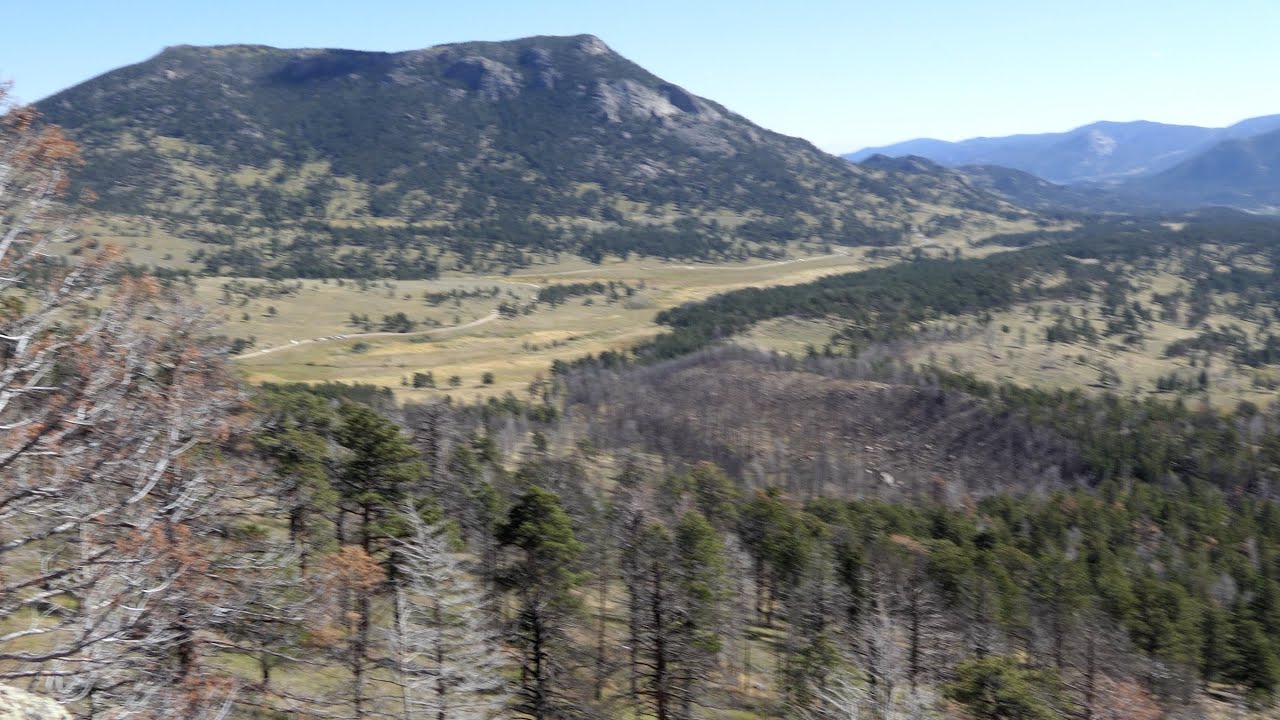We’re taking you to Rocky Mountain National Park on this Throwback Thursday blog as we continue to work through our backlog of blogs!
The Upper Beaver Meadows Loop in Rocky Mountain National Park makes for a delightful day of hiking for fans of flowers, birds, and views with its variety of meadows and forested areas. The East Troublesome Fire of 2020 burned some of the forest, changing the landscape, but the birds, flowers, and views are still great.
We hiked the Upper Beaver Meadows Loop in the spring of 2019 as part of the project to make the Day Hikes of Rocky Mountain National Park Map Guide. A year later, the East Troublesome Fire burned some of the forest on the southern side of Beaver Mountain and down the moraine to the southeast. We came back in 2023 to see how it had changed the trail. This time, we came in later September, so we got to experience the hike in the fall.
The trail starts out in the Upper Beaver Meadows. We crossed over Beaver Brook and began traversing across the meadows. In the spring, the green meadows are scattered with flowers, larkspur, penstemon, cinquefoil, etc, but by later fall, the grass has turned golden and only a few late season flowers remain such as asters and stonecrop.
The birds, however were still around. We saw many corvids such as Steller’s Jays, Clark’s Nutcrackers, Common Ravens, and Magpies. Small Pygmy Nuthatches and the ever-present Dark-eyed Juncos flitted around. We crossed the meadow towards the moraine that separates the meadow from Moraine Park and first entered into the burn.
The trail takes two quick rights, so paying attention to maps and signs is helpful, but you know you’re doing it right when you start to work up the hillside along the moraine and not over it. The black trees are a reminder of the dynamic environment. It did open up the forest somewhat, making it a hotter hike. We stayed left at the junction with the other trail that traverses the meadow and followed up the draw.
After a bit of climbing, the draw closes up and a spur trail leads to glorious views of Moraine Park where the Big Thompson River follows a serpentine path through the flat grassland. The rugged, wooded moraines that flank the park provide wonderful contrast. If you have binoculars or a camera with a long lens, it’s much easier to see the elk that frequent the meadows. Looking up from the vantage, you can pick out Longs Peak, Thatchtop and a variety of other summits to the south and west.
We returned to the trail and took a right at the junction to follow the trail northeast as it continued to climb along Beaver Mountain. The once lush, aspen forest is now a stand of dead trees, but new shoots are quickly reclaiming the opened canopy. This area is fantastic for spring birding with loads of nesting birds such as House Wrens.
More climbing than you expect leads to the upper stretches of the meadows. A rock outcropping near a hitching post (with a short climbing scramble to the top) leads to amazing views from Deer Mountain out to the rocky cliffs near Bear Lake. We grabbed a snack and enjoyed the views before continuing on.
The meadows continued with views, birds, and remaining wildflowers before we dropped into a younger, lodgepole forest (probably of fires past). One of the special aspects of this hike is changes such as this which then leads to tall aspens and the wetter meadows lining Beaver Brook. The bugs of the spring were gone as were most of the wildflowers, but the aspens were turning gold.
There is one little dry ridge that we climbed to reach another wet meadow. From here there is one last climb up through tall ponderosa pines. Keep an eye out for elk in this section as it’s not uncommon to see them here. Once at the top of the climb, it’s traversing through open sagebrush grasslands with wonderful views around. Keep an eye out for bluebirds as well as lower growing flowers depending upon the time of year.
The trail then gradually works downwards as it wraps southwest, ending on the road where a short walk leads back to the trailhead to close the loop.





Leave a Reply